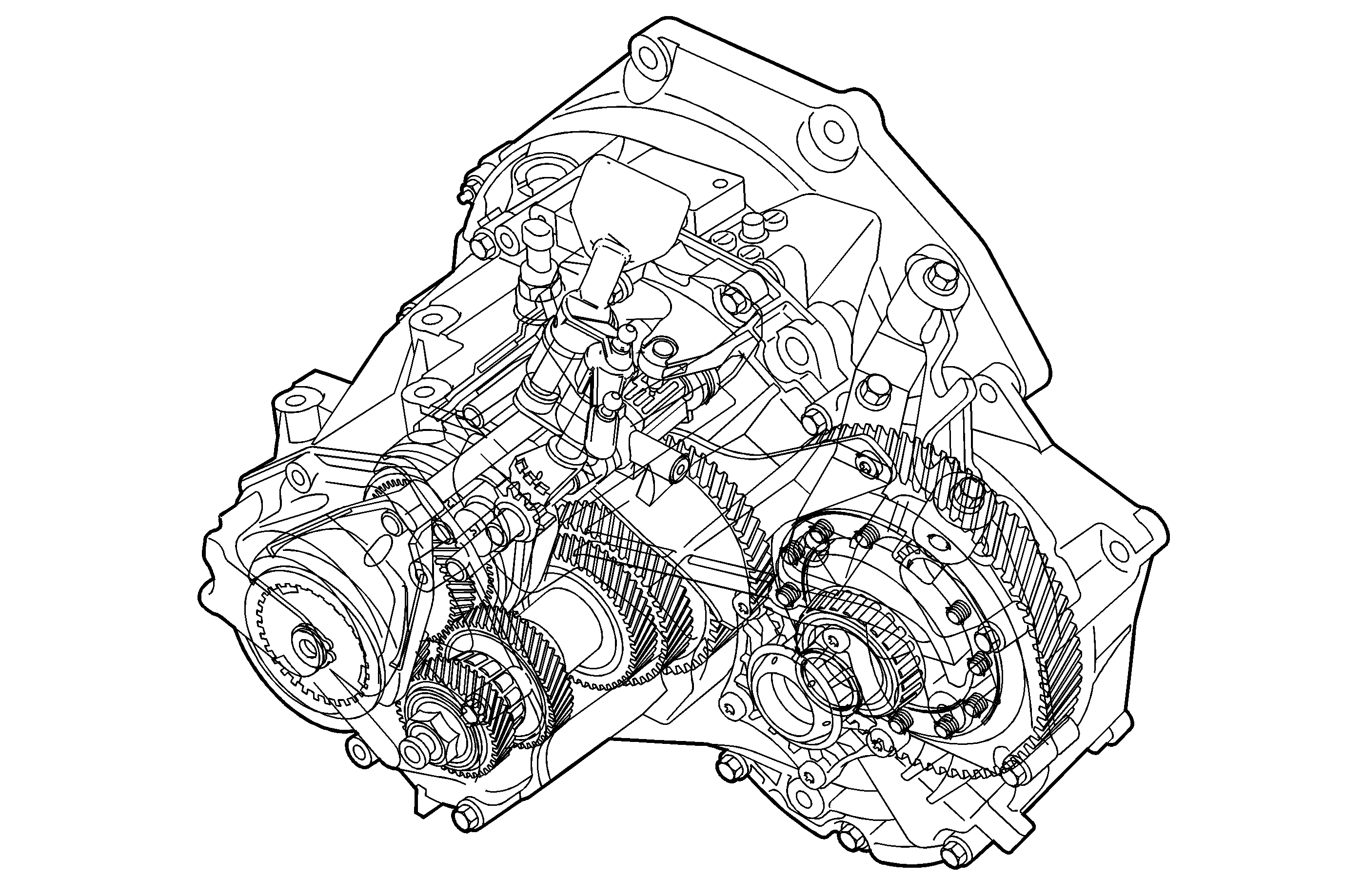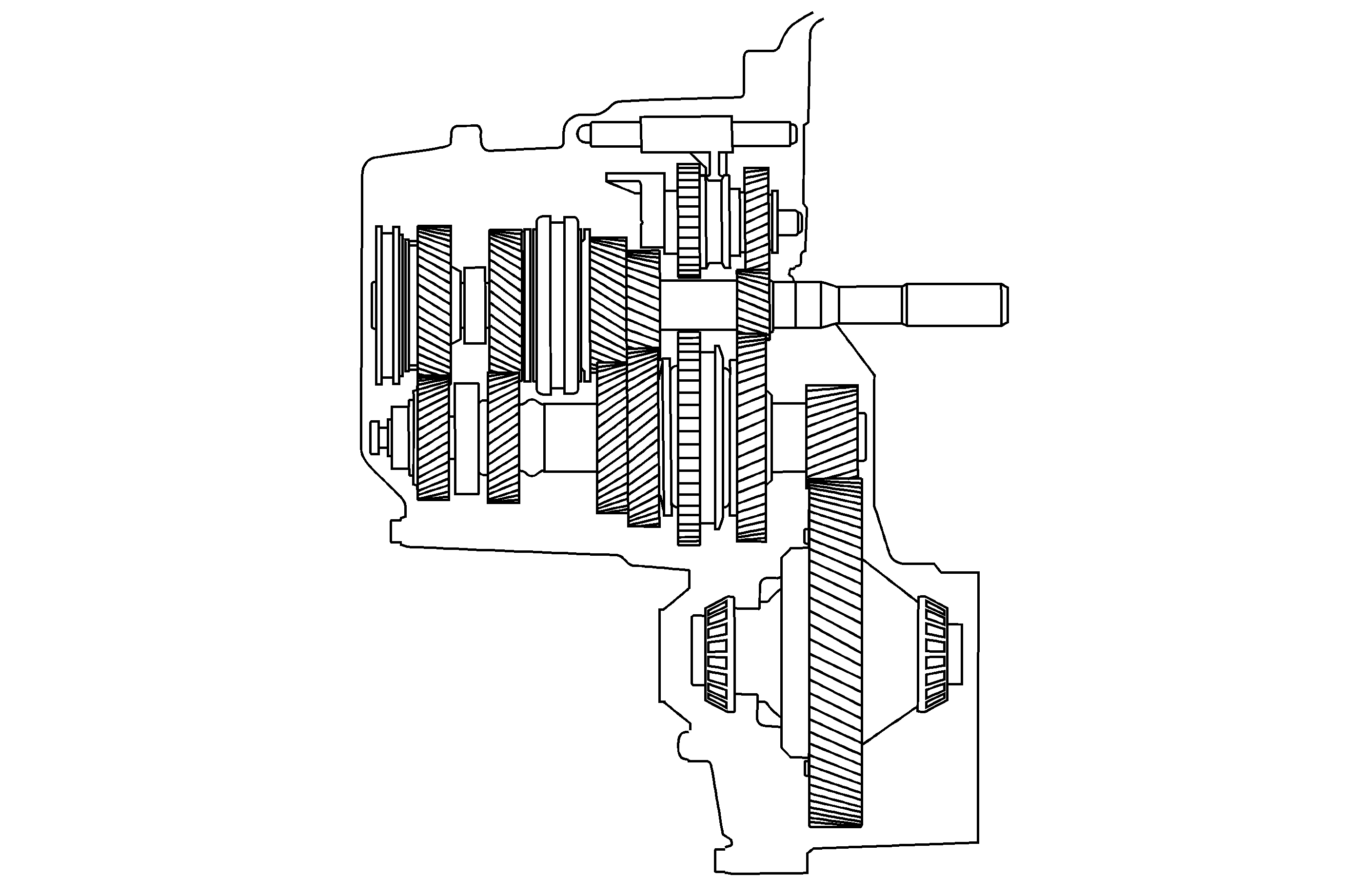
The manual gearbox is 5-speed. All of the gears are synchronized. The gearbox has relatively small rotating masses, and thereby small moment of inertia, which is slowed with each gear change. This means that the gearbox is light and flexible, at the same time as interior wear on baulk rings and synchromesh sleeves becomes almost non-existent. The baulk rings are located on input an output shafts. Note that the gears on the input shaft are called pinions (driving) while the gears on the output shaft are called gears (driven). The 3rd, 4th and 5th gear pinions are needle bearing mounted in order to obtain the absolute lowest friction losses and thereby a high degree of efficiency.
For better synchromesh function, the 1st and 2nd gears have 2 baulk rings. The 3rd, 4th and 5th gears have 3 leaf springs mounted between each baulk ring and its hub. This is to ensure that the baulk ring cannot move and generate noise when not under load.
The input and output shafts have bearings with taper roller bearings to obtain maximum bending rigidity in the shafts with loading. The output shaft roller bearings are located inside the final drive pinion, which means that the shaft is totally insensitive to high loads. The gearbox's method of operation is made clear in the outline sketch. The transmission from the engine runs directly to the input shaft via the clutch.
Power transmission in 1st gear : When driving in 1st gear, power is transmitted via the 1st pinion on the input shaft to the output shaft by means of the 1st pinion, which is secured to the output shaft, being locked to it by the 1st/2nd synchromesh sleeve.Power transmission in 2nd gear: In a corresponding way to 1st gear, but instead the 1st/2nd synchromesh sleeve locks 2nd gear to the output shaft.
Power transmission in 3rd gear: When driving in 3rd gear, power is transmitted via the 3rd pinion on the input shaft to the output shaft by means of the 3rd pinion, which is secured to the input shaft, being locked to it by the 3rd/4th synchromesh sleeve.
Power transmission in 4th gear: In a corresponding way to 3rd gear, but instead the 3rd/4th synchromesh sleeve locks the 4th pinion to the input shaft.
Power transmission in 5th gear: In a corresponding way to 3rd and 4th gears, but instead the 5th synchromesh sleeve locks the 5th pinion to the input shaft.

Power transmission, reverse gear: The reverse gear has an extra shaft (the reverse gear shaft). This shaft holds a journalled reverse gear wheel which is constantly meshed with the 1st gear pinion on the input shaft and a journalled reverse gear pinion which is constantly meshed with the 1st/2nd synchromesh sleeve on the output shaft. On the reverse gear is also a synchromesh sleeve which can mesh the reverse gear wheel with the reverse gear pinion. When driving in reverse gear, the power is transmitted from the 1st pinion on the input shaft to the reverse gear wheel by the synchromesh sleeve in this position meshing the reverse gear pinion with the reverse gear wheel. The power is then transmitted from the reverse gear pinion to the 1st/2nd synchromesh sleeve which drives the output shaft. By means of the power from the input shaft to the output shaft traveling via a third shaft, the desired direction of rotation is achieved for the reverse gear.
